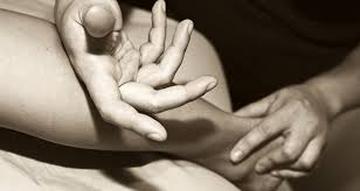Chinese Massage (Tui Na)
Tui Na is a therapeutic form of massage and has been used in China for more than 2,000 years. Tui Na massage therapy has been considered the external form of massage and is used for giving special treatments to people of all ages, from infancy to old age. This Chinese therapy makes use of rhythmic compression techniques along different energy channels of the body to establish harmonious flow of Qi throughout the body and bringing it back to balance. It works deeply with the positive energy of the body.
Tui Na makes use of various hand techniques in combination with acupuncture and other manipulation techniques. To enhance the healing process, the practitioner may recommend the use of Chinese herbs. Many of the techniques used in this massage resemble that of a western massage like gliding, kneading, vibration, tapping, friction, pulling, rolling, pressing and shaking. In Tui Na massage, the muscles and tendons are massaged with the help of hands, and an acupressure technique is applied to directly affect the flow of Qi at different acupressure points of the body, thus facilitating the healing process. It removes the blockages and keeps the energy moving through the meridians as well as the muscles.
How does it work?
Tuina works on the muscles, bones, and joints, as well as working with the deeper energy of the body through the manipulation of the flow of qi via acupressure points and energy pathways throughout the body. Tuina was one of the earliest methods of treating illness used in ancient China, designed to prevent problems by keeping the body’s energy in balance and health maintained. It has since undergone several thousand year of practice and development, resulting in a discipline that is unique and comprehensive, and which aligns its theory perfectly with its practice. Tuina works on acupuncture points, focusing on nerve activity in the same way as acupuncture to enhance blood circulation and to correct abnormal anatomical changes as wall as relax muscles.
During a typical Tuina massage session, the patient wears loose clothing and no footwear. Through the application of massage and stretching techniques, Tuina uses the Traditional Chinese Medicine theories of the flow of qi to establish a balance of harmonious flow of qi and blood through the body. This allows the natural healing process to strengthen and develop through the promotion of blood circulation.
Benefits Soft tissue, such as muscles and tendons, are massaged according to acupressure techniques to manipulate and realign the musculoskeletal and ligamentous relationships. Tui Na as has also been used to treat sports injuries, tendonitis, muscular problems, stress-related problems, internal medical problems such as post-stroke paralysis, asthma, arthritis, hypertension, etc, and infant health problems.
Tui Na makes use of various hand techniques in combination with acupuncture and other manipulation techniques. To enhance the healing process, the practitioner may recommend the use of Chinese herbs. Many of the techniques used in this massage resemble that of a western massage like gliding, kneading, vibration, tapping, friction, pulling, rolling, pressing and shaking. In Tui Na massage, the muscles and tendons are massaged with the help of hands, and an acupressure technique is applied to directly affect the flow of Qi at different acupressure points of the body, thus facilitating the healing process. It removes the blockages and keeps the energy moving through the meridians as well as the muscles.
How does it work?
Tuina works on the muscles, bones, and joints, as well as working with the deeper energy of the body through the manipulation of the flow of qi via acupressure points and energy pathways throughout the body. Tuina was one of the earliest methods of treating illness used in ancient China, designed to prevent problems by keeping the body’s energy in balance and health maintained. It has since undergone several thousand year of practice and development, resulting in a discipline that is unique and comprehensive, and which aligns its theory perfectly with its practice. Tuina works on acupuncture points, focusing on nerve activity in the same way as acupuncture to enhance blood circulation and to correct abnormal anatomical changes as wall as relax muscles.
During a typical Tuina massage session, the patient wears loose clothing and no footwear. Through the application of massage and stretching techniques, Tuina uses the Traditional Chinese Medicine theories of the flow of qi to establish a balance of harmonious flow of qi and blood through the body. This allows the natural healing process to strengthen and develop through the promotion of blood circulation.
Benefits Soft tissue, such as muscles and tendons, are massaged according to acupressure techniques to manipulate and realign the musculoskeletal and ligamentous relationships. Tui Na as has also been used to treat sports injuries, tendonitis, muscular problems, stress-related problems, internal medical problems such as post-stroke paralysis, asthma, arthritis, hypertension, etc, and infant health problems.

